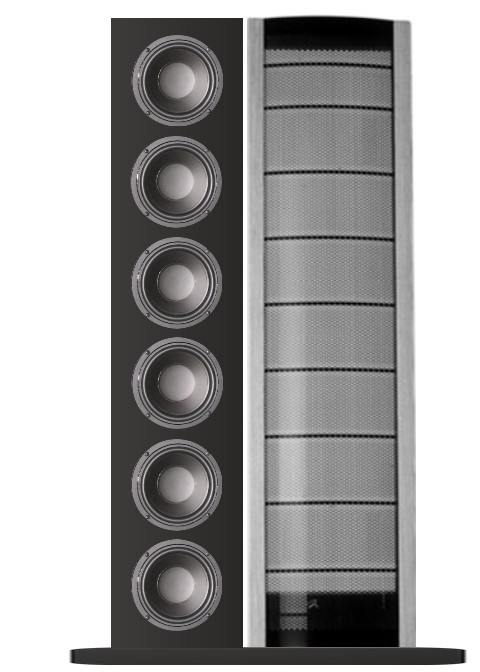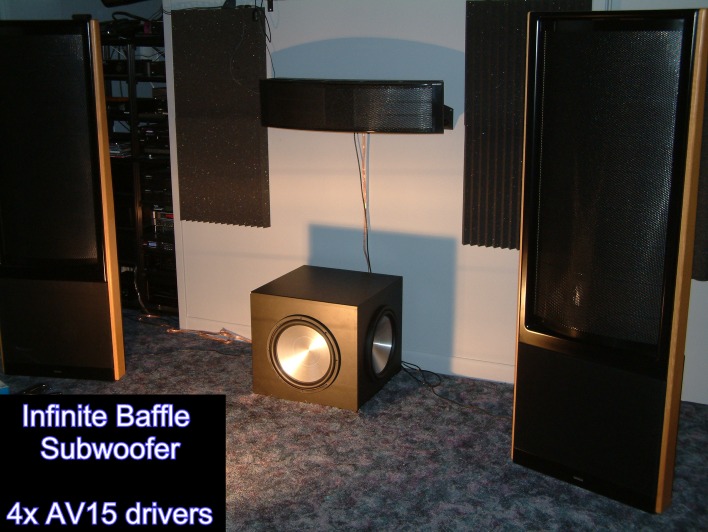Genesis:
After enjoying 12 years of the fabulous Logos center channel from Martin Logan, I was yearning for a larger and more powerful center to pair up with the big Monoliths.
The Logos is a great speaker, but is dynamically limited when pushed. Its single 6.5” mid-bass driver would bottom out at high SPL’s, requiring a fairly high 100Hz crossover and a steep 24db octave slope to remove enough low-frequency energy from it. Also, the midrange and treble was not quite as powerful as what the Monoliths can do (physics having something to do with it ;-).
Looking at Martin Logans subsequent efforts, the Theater and Theater-i, the improvement over the Logos was detectable, mostly due to dual mid-bass drivers. But overall, not worth the high cost of tradeup.
In 2005, ML announced upcoming centers based on the new Xstat technologies that would deliver greater output per square inch of panel. The new Stage was announced, and finally seems to be available now in the spring of 2006. However, at $3,500, it’s both too expensive and still not powerful enough for my needs.
For that kind of money, and given my ability to host a really large center behind my perforated screen I decided to pursue something completely different. Which is always more fun anyway
After enjoying 12 years of the fabulous Logos center channel from Martin Logan, I was yearning for a larger and more powerful center to pair up with the big Monoliths.
The Logos is a great speaker, but is dynamically limited when pushed. Its single 6.5” mid-bass driver would bottom out at high SPL’s, requiring a fairly high 100Hz crossover and a steep 24db octave slope to remove enough low-frequency energy from it. Also, the midrange and treble was not quite as powerful as what the Monoliths can do (physics having something to do with it ;-).
Looking at Martin Logans subsequent efforts, the Theater and Theater-i, the improvement over the Logos was detectable, mostly due to dual mid-bass drivers. But overall, not worth the high cost of tradeup.
In 2005, ML announced upcoming centers based on the new Xstat technologies that would deliver greater output per square inch of panel. The new Stage was announced, and finally seems to be available now in the spring of 2006. However, at $3,500, it’s both too expensive and still not powerful enough for my needs.
For that kind of money, and given my ability to host a really large center behind my perforated screen I decided to pursue something completely different. Which is always more fun anyway


























